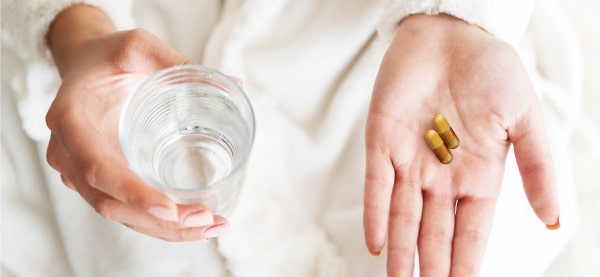NMN (Nicotinamide MoNoncleotide) is one of the components contained in vitamins, and is found in very small amounts in green and yellow vegetables.
In addition to being ingested as food, NMN is also produced in the body from vitamin B3 (niacin). The presence of NMN holds the key to keeping living cells young and active without aging.

*This was announced in 2016 by a professor in the Department of Developmental Biology at the University of Washington School of Medicine, and it attracted attention from around the world.
When the rejuvenating effect of externally ingesting NMN, which decreases with age, was announced, supplements containing NMN were immediately sold, but some cost more than 1 million yen for a month's supply. Even in 2022, there are products that cost hundreds of thousands of yen, and it was a high-end supplement that was difficult to afford. At present, its safety has been confirmed in human clinical trials, and various effects and efficacy are being studied.
It was also introduced by the famous Horiemon and attracted attention from all over the world.
NMN supplements used to be difficult to try, but now it is possible to obtain inexpensive ingredients from overseas, and affordable NMN supplements have also appeared.
What is the mechanism of action of anti-aging by NMN?
We would like to introduce how NMN (nicotinamide monocleotide) exerts its anti-aging effects.
❑Relationship between NMN and sirtuin genes, so-called longevity genes
When NMN (nicotinamide mononucleotide) is absorbed into the body, it turns into an important "coenzyme (a type of vitamin B3)" called NAD+ (nicotinamide adenine dinucleotide). In fact, NAD+, which is produced based on NMN, plays the most important role.
NAD+ exists in the cells of all living things and can be said to be an electron carrier that plays an important role in the survival of living cells.
In literature, it may be difficult to understand because NAD+ has a plus sign attached to it, but the "+" simply means that it has a positive charge. NAD molecules repeatedly undergo redox reactions in which they receive electrons (reduction) or lose electrons (oxidation), so NAD in a charged state is expressed as NAD+.
NAD+ is also produced in small amounts in our bodies from tryptophan (an amino acid) and vitamin B3 (niacin).
NAD+, which is quickly created by ingesting NMN, plays an important role in generating energy from sugar in the body.
❑When NAD increases, sirtuin genes (longevity genes) are activated
The most important function is that as NAD increases, genes (enzymes) that control aging called "sirtuin genes" present in the brain are activated. This sirtuin gene is present in large quantities in the hypothalamus of the brain, and although it is not normally active, it is a rejuvenation gene that becomes active when we are in a state of starvation. NAD is said to activate all seven types of sirtuin genes.

One of the seven types of sirtuin genes has the function of ``controlling sugar and fat metabolism.'' The anti-aging effect appears because this function is activated.
In addition, it has been discovered that NAD is broken down by an enzyme called CD38, which increases with age. Therefore, to increase NAD, it is necessary to take NMN and at the same time take ingredients that suppress the increase in CD38. It is considered ideal to do so.
However, since we do not know whether it is a good idea to suppress the increase in CD38 and what kind of side effects it may cause, I will refrain from discussing it here. Also, people tend to think that it would be faster to take NAD as a supplement instead of NMN, but in reality, NAD has a large molecular weight and is difficult to take into the body as it is. Manufacturing is faster and more efficient.
In addition to NMN, there is also a method of producing NAD by ingesting vitamin B3 called NR (nicotinamide riboside), but this also does not seem to be as efficient as NMN at present.
References) https://www.nomon.jp/lab/nmn/20210419-1/
*Enzymes are catalysts that work within living organisms, and coenzymes are components that can supplement enzymes. In the first place, life cannot occur without enzymes.
❑How much NMN should I incorporate?
According to papers from human clinical trials, it seems that there is little point in ingesting NMN for healthy people between the ages of 20 and 30. NMN is a component that is naturally produced within the body, so young people tend to have sufficient amounts of NMN themselves.
As with NMN, NAD decreases with age, so it has anti-aging effects on older people.
In the literature, certain effects have been confirmed by taking approximately 250mg a day for 10 weeks.

*NMN is not a drug, so there is no fixed daily dose of 250mg, but approximately 100mg to 300mg seems to be ideal. Some papers have confirmed the safety of up to 500mg of single-dose intake.
*This does not mean that all of the rejuvenating effects obtained through mouse experiments will apply to humans, but we have great expectations.